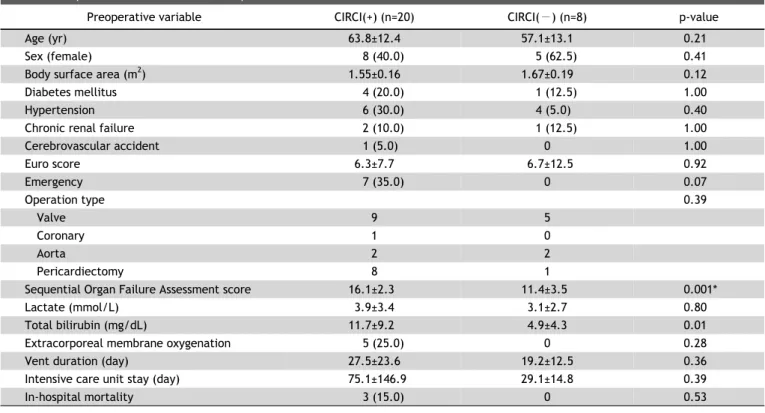Critical Illness-Related Corticosteroid Insufficiency in Patients with Low Cardiac Output Syndrome after Cardiac Surgery
전체 글
수치


관련 문서
This showed that the surgical outcome was successfulin 269 patients (98.89%),butthe revision surgery due to surgicalrelapse was performed in three patients.Of 152 patients
The purpose of this study was to identify the frequency and related factors of advanced airway management for patients with cardiac arrest by the
Result: During the study period, 482 patients had elevated cardiac troponin-T levels. The positive predictive value for the.. The diagnostic importance of
Results: In this research, in the group with fibromyalgia patients group, systemic lupus erythematosus patients group and without systemic autoimmune
With these results, we can suggest the hypothesis that increased cardiac output in the patients who administered ketamine increased muscle blood flow, and this is the
Serum uric acid levels and risk for vascular disease in patients with metabolic syndrome... Prevalence if the metabolic syndrome in a Turkish
Definition of patients presenting a high risk of developing peritoneal carcino- matosis after curative surgery for colorectal cancer: a systematic review..
Objective: To investigate demographic and skeletodental characteristics of one-jaw (1J-OGS) and two-jaw orthognathic surgery (2J-OGS) in patients with skeletal Class